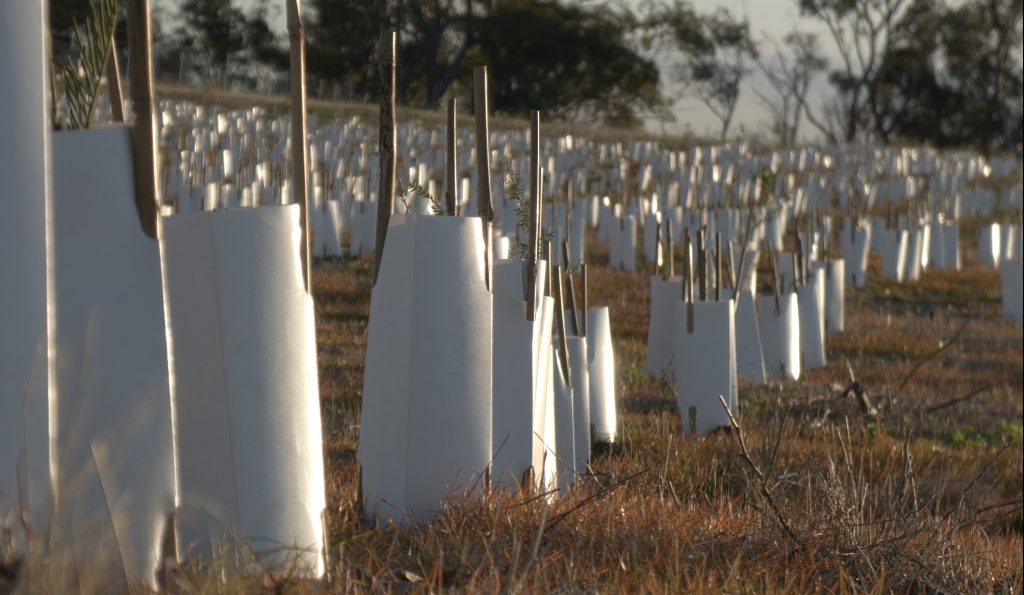
Revegetation Plant Varieties
Published 29 June 2022
The revegetation plan includes a wide variety of native flora. They are split into 4 categories – Large Canopy Trees, Understorey & Small Trees, Shrubs, Lilies & Herbs – over 6 locations: the Overburden & Old Quarry, North Escarpment & Quarry Pit, Overburden Perimeter, Upper Riverbanks, Lower Riverbanks, and Swales.

These species of plants and trees are vital to the natural rehabilitation of the land because of the role they play within the ecosystem; they provide food and shelter to communities of organisms that nourish the earth, the air, and the water. They can also contribute to the community and local business with the properties they contain, and they also hold significant sentimental value to the history of the land.
Read on and you’ll find out why these plants and trees are so important – you’ll find a bunch of fun facts about this native flora – most of the plants and trees are quite common throughout Australia, but some of them play a much more significant role in maintaining the land we love, than you’d think…
LARGE CANOPY TREES
The Large Canopy Trees include a vast mix of native Eucalyptus species:
Red Box – Polyanthemos, which is
- resistant to root rot
Grey Box – Microcarpa
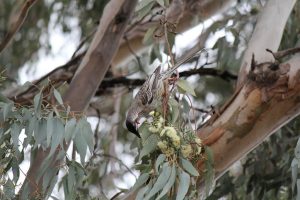
Yellow Gum, Blue Gum, or White Ironbark – Leucoxylon, which
- is used to produce cineole-based eucalyptus oil via distillation
River Red Gum – Camaldulensis
Swamp Gum or Black Gum – Ovata
Narrow-Leaved or Forth River Peppermint – Radiata, which
- has 6 known chemotypes of essential oil
- the leaves are distilled for eucalyptus oils. Eucalyptus Radiata was the first eucalyptus species to be commercially utilized for oil by Melbourne pharmacists, Joseph Bosisto in 1854 as “Eucalyptus Amygdalina”.
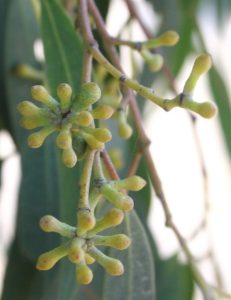
Manna Gum, White Gum, Ribbon Gum – Viminalis
UNDERSTOREY & SMALL TREES
The Understorey and Smaller Trees include:
Black Sheoak – Allocasuarina Littoralis
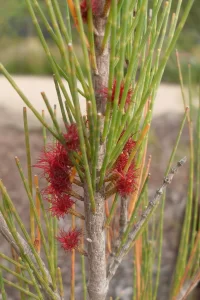
Drooping Sheoak – Cassinia Arcuata
Western Black Tea-tree – Melaleuca Lanceolata, which
- is attractive to wildlife
SHRUBS
The varieties of Shrubs include:
Australian Blackthorn – Bursaria Spinosa, which
- is harvested as an ingredient in sunscreen and the drug Aesculin – which is a medication used to prevent conditions and diseases that affect blood vessels
Drooping Cassinia – Cassinia Arcuata
Common Riceflower – Pimelea Humilis
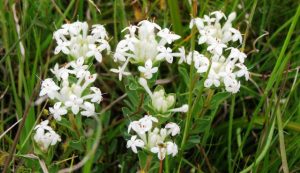
Tree Everlasting – Ozothamnus Ferrugineus
Tree Violet – Hymenanthera Dentata
Native Juniper – Myoporum Insulare, which
- has edible, purple fruit that is used to make jams and jellies
Kangaroo Thorn – Acacia Paradoxa, which
- makes an excellent bird habitat and food source

River Bottlebrush – Callistemon Sieberi
Prickly Currant Bush – Coprosma Quadrifida
- produces fruit from January to March that is used typically in salads and puddings
Woolly Tea Tree – Leptospermum Lanigerum, which
- produces fruit
- was used medicinally by indigenous Australians and for the creation of double-barbed spears
- was used as a tea substitute by European settlers. Captain Cook’s crew also brewed this tea as they believed it would help prevent scurvy
Prickly Tea Tree – Leptospermum Continentale
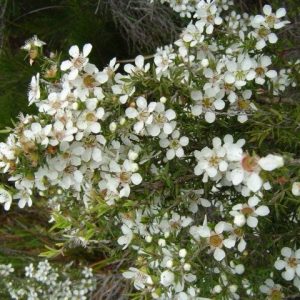
White Tea Tree – Kunzea Ericoides
LILLIES & HERBS
And finally, the spectacular Lilies and Herbs, which include the:
Wattle Mat-Rush – Lomandra Filiformis
Australian Saltbush – Atriplex Semibaccata
- assists in pest control by increasing the abundance of invertebrates and parasitoids as it provides shelter which increases biodiversity/activity and the breakdown of organic material, maintain the nutrient cycle that keeps surrounding vegetation healthy
- improves structure and quality of soil and suppresses weeds
Blueberry Lily – Dianella Revoluta, which
- is edible
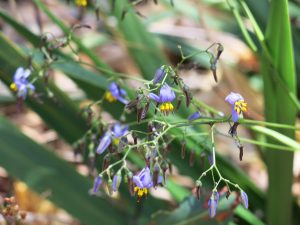
and, Climbing Saltbush – Einadia Nutans SSP Nutans, which
- was boiled and used as a green-vegetable substitute by early European settlers
- is increasingly popular as a garden plant for its minimal maintenance and low water usage properties
While the list of plant varieties that are included in the revegetation around the quarry goes on, the above species provides some insight into the wide variety of native flora that has been selected with consideration to rehabilitating the ecosystem surrounding the future lake.
